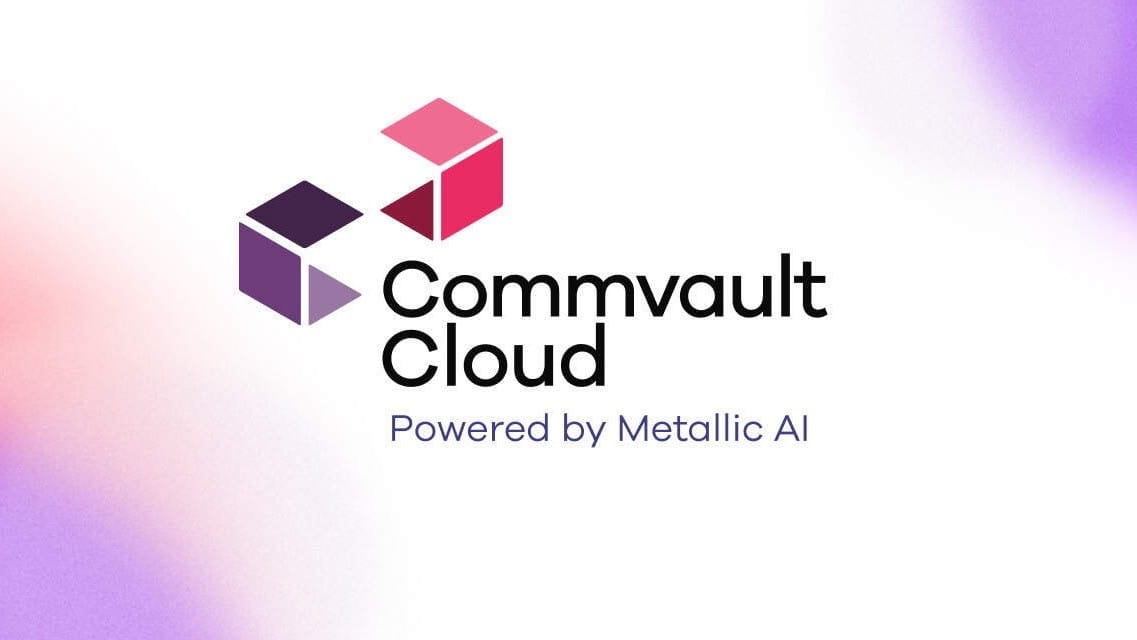Commvault - From Backup Hero to Cyber Resilience Evangelist
Remember Commvault? That backup company your IT team quietly relied on while everyone else talked about Kubernetes and AI? Well, forget everything you thought you knew - Commvault wants to be your cyber resilience partner now. Because apparently, in 2025, just backing things up is so passé.

Let’s set the stage first. The average cost of a data breach has climbed to a staggering $4.88 million. Infrastructure? Messier than ever. Over 60% of companies are juggling more than 25 SaaS applications - each with its policies, vulnerabilities, and login screens. Meanwhile, 23% of cloud security incidents can still be traced back to that age-old villain: misconfiguration. The digital house isn’t just on fire - it’s built on a shaky foundation with a gas leak in the kitchen.
So, what does Commvault do? It launches Commvault Cloud - a platform that’s no longer content to be the dusty safety net sitting in your IT closet. No, this one wants to understand your data, monitor it in real-time, detect threats, respond to incidents, and then recover like a well-trained incident response team. In other words, Commvault doesn’t just want to be the plan B anymore - it wants to be the whole alphabet.
The centerpiece of this reinvention is Threatwise, Commvault’s answer to modern threat detection. It claims real-time insight across hybrid environments - on-prem, cloud, and SaaS alike. Think of it as a sort of cybersecurity Swiss Army knife, with tools for deception technology, anomaly detection, and threat intelligence built-in.
It sounds impressive because it is, on paper. But like most Swiss Army knives, the question is whether you need all 48 functions or just a good screwdriver and corkscrew. For smaller teams or mid-size companies, there’s a risk of overbuying or underutilizing. After all, resilience only works when it’s implemented.
The ambition is clear - Commvault wants to unify Security, Data Protection, and IT Operations into one tidy package. Imagine a world where your backup platform talks to your security stack, which talks to your recovery plan, which talks to your dashboard - and no one sends you a 3 AM Slack alert because of a misfired API call.
It’s a nice dream. And in a greenfield environment, it may even be plausible. But the reality? Most enterprises are already deeply entangled with AWS, Azure, or Google Cloud’s security ecosystems. Many have made multiyear commitments, bundled contracts, and semi-functional integrations with Vendor A, B, and C. Convincing them to pay extra for redundancy - especially when cloud vendors already bundle security tools, is a hard pitch, no matter how sleek your UI.
Commvault’s pivot isn’t happening in a vacuum. It’s part of a broader industry trend where backup vendors are desperately trying to escape the perception that they’re just storage companies in disguise. Think Rubrik, Cohesity, and Veeam - all chasing a new identity somewhere between data protection and cyber defense. The term “resilience” has become the lifeboat term of choice - not quite security, not quite continuity, but just vague enough to make room for both.
And let’s be honest, customers want simplicity, but they also want best-in-breed. Unifying everything sounds great until one component underdelivers and you can’t swap it out without breaking the whole chain. The mythical “single pane of glass” is often more like a fogged-up window, sure, it’s technically all there, but is it useful?
To Commvault’s credit, the vision isn’t hollow. They’ve been investing in R&D, modernizing their interfaces, and acquiring talent with security DNA. They understand that in 2025, data and security are inseparable - a breach doesn’t just hurt your perimeter, it wrecks your backups, poisons your compliance posture, and takes weeks (or months) to fix.
But as many before them have learned, building an all-in-one platform is less about technology and more about navigating the messy politics of enterprise IT. The rebirth of Commvault will depend not just on product excellence, but on how well it can interoperate, integrate, and influence decision-makers who are already stretched thin.
Will Commvault become a pillar of next-gen resilience? Or will it quietly return to its backup box, next to the NERO Software - CD-burning software we all uninstalled a decade ago? Time, and procurement committees, will tell.
The article is a result of my trip to Cloud Filed Day 23 in California in June 2025. You can watch video from this event here:


